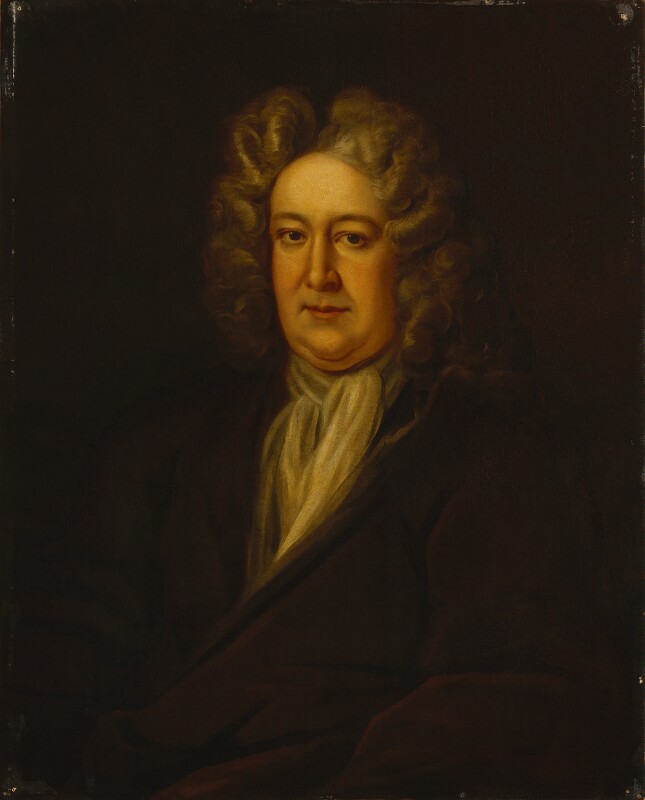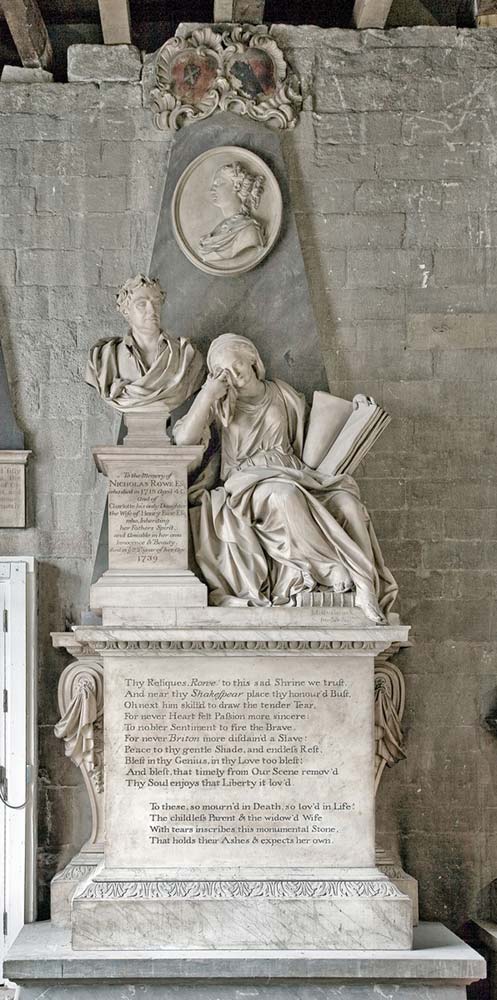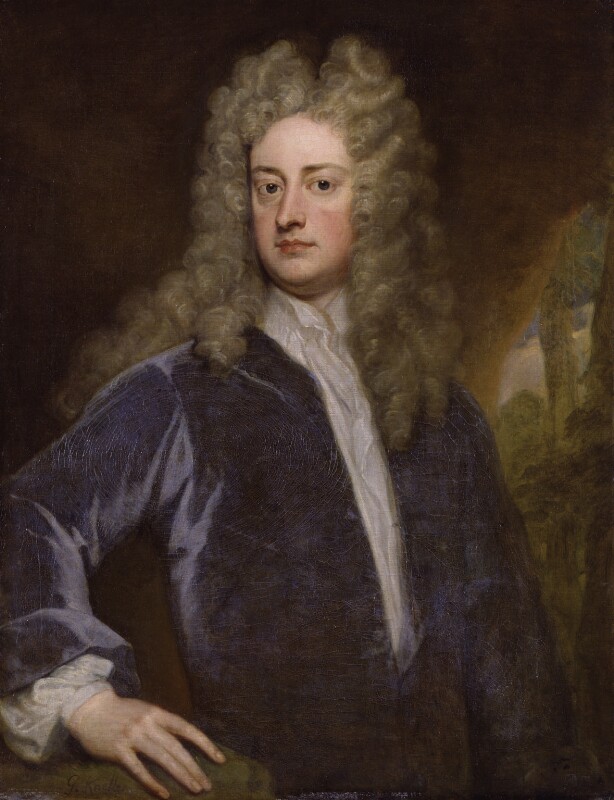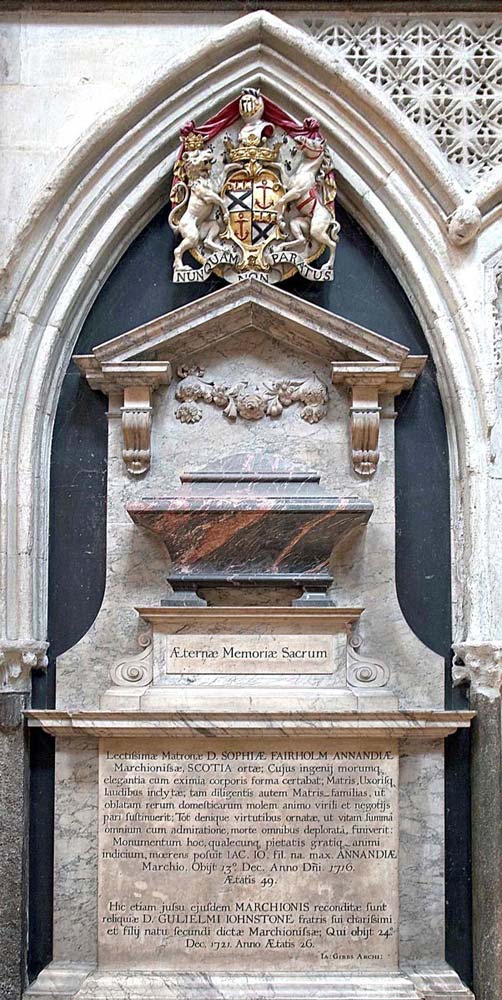Nicholas Rowe
Nicholas Rowe, Poet Laureate and dramatist, was buried in Poets' Corner in Westminster Abbey, to the right of the stone to Thomas Parr. His gravestone had no inscription.
He was the only son of John Rowe of Lamerton in Devon and Elizabeth, daughter of Jasper Edwards. He was born at Little Barford in Bedfordshire on 30th June 1674 and received part of his education at Westminster School. Dr Samuel Johnson called Rowe's translation of Lucan "one of the greatest productions of English poetry". He edited many of Shakespeare's plays and in 1714 was appointed Poet Laureate. Rowe married first a daughter of a Mr Parsons and left a son John. By his second wife, Anne Devenish, he had a daughter Charlotte. His burial took place on 19th December 1718 and Anne and Charlotte were later buried with him.
Charlotte was baptised at St Paul's church, Covent Garden on 1st June 1718 and married Henry Fane, a younger brother of the Earl of Westmoreland, in 1735. She was buried on 7th October 1739. Their daughter Charlotte married Sir William St Quintin. Nicholas' widow Anne married Colonel Alexander Deanes in St Margaret's Westminster on 31st January 1724 and she was buried on 12th December 1747.
Monument
A marble monument, by the sculptor John Michael Rysbrack, was erected by his widow near the grave in 1742, a few feet from Shakespeare's memorial. It shows a bust of the poet with a seated mourning woman holding an open book and on the pyramid behind is a relief head of Charlotte. The inscription reads:
To the Memory of NICHOLAS ROWE Esq: who died in 1718 Aged 45, And of Charlotte his only daughter the wife of Henry Fane Esq; who, inheriting her Father's Spirit, and Amiable in her own Innocence & Beauty, died in the 22nd year of her age 1739.
Thy Reliques, Rowe, to this sad Shrine we trust, and near thy Shakespear place thy honour'd Bust, Oh next him skill'd to draw the tender Tear, For never Heart felt Passion more sincere: To nobler sentiment to fire the Brave. For never Briton more disdain'd a Slave: Peace to the gentle Shade, and endless Rest, Blest in thy Genius, in thy love too blest; And blest, that timely from Our Scene remov'd Thy Soul enjoys that Liberty it lov'd.
To these, so mourn'd in Death, so lov'd in Life! The childless Parent & the widow'd wife With tears inscribes this monument Stone, That holds their Ashes & expects her own.
The Rowe coat of arms, a red shield with three holy lambs holding banners, also appears on the monument.
In the 1930s a 13th century painting was discovered on the wall behind Rowe's monument, and another behind the adjoining memorial to John Gay, and both memorials were removed to the south triforium of the Abbey. A modern inscription on the bench below the paintings records the position of the monuments in the south transept. These two monuments can now be viewed in the new Queen's Diamond Jubilee Galleries.
Further Reading
Oxford Dictionary of National Biography
Rysbrack's original design (varies from that executed) is at the Victoria & Albert Museum

© National Portrait Gallery, London [Creative Commons CC BY-NC-ND 3.0]

This image can be purchased from Westminster Abbey Library
Image © 2024 Dean and Chapter of Westminster

This image can be purchased from Westminster Abbey Library
Image © 2024 Dean and Chapter of Westminster










